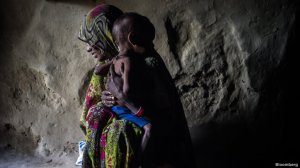An estimated 36% of the world’s very poor – about 50-million people – escaped extreme poverty because of social safety nets, providing clear evidence that social safety net programmes are making a substantial impact in the global fight against poverty, the World Bank reports.
The World Bank’s ‘State of Social Safety Nets 2018’ report, released on Wednesday, shows that safety nets, including cash, in-kind transfers, social pensions, public works, and school feeding programmes targeted to poor and vulnerable households, also lower inequality and reduce the poverty gap by about 45%, even if people do not emerge from poverty.
These positive effects of safety net programmes hold true for low- and middle-income countries alike.
Safety nets build resilience and protect vulnerable households from impacts of economic shocks, natural disasters and other crises, says the World Bank.
However, despite the increased adoption of safety net programmes by countries in recent years, global coverage of poor and vulnerable people remains inadequate.
About 2.5-billion people worldwide are covered by a social safety net, of which 650-million are in the poorest 20%.
However, only one out of five people living in a low-income country is covered by a social safety net, while countries at high risk of natural disasters often have lower safety net coverage.
Globally, developing and transition countries spend an average of 1.5% of gross domestic product (GDP) on safety net programmes. Latin America and the Caribbean countries spend about 1.5% of GDP, while Europe and Central Asia spend about 2.2% of GDP, East Asia and Pacific countries about 1.1% of GDP, the Middle East and North Africa about 1% of GDP, and South Asia about 0.9% of GDP on safety nets.
Many countries are spending more on such programmes because they see the impact they make on poverty reduction, says World Bank Group human development VP Anette Dixon.
Countries in sub-Saharan Africa and Asia are also introducing flagship social safety net programmes and are rapidly expanding coverage.
For example, in Senegal, the flagship National Cash Transfer Program expanded swiftly from 3% to 16% of the population in just four years, while, in the Philippines, the Pantawid conditional cash transfer programme has expanded from 5% to 20% of the population since 2010.
The report is the third in a series of studies that monitor and report on the growth and coverage of social safety nets in the developing world and helps benchmark where individual countries and regions stand in terms of social safety net spending, key performance indicators and the impact on reducing poverty and inequality.
The analysis presented in the report uses administrative data for 142 countries and household survey data for 96 countries from the Aspire database, and provides much needed empirical evidence in the context of an increasing global focus on social protection, as is evident in the Sustainable Development Goals.
“Social safety net programmes matter if we want to reduce poverty and inequality. Our data shows that only countries with substantial coverage and benefit levels make important gains in poverty reduction,” says Dixon.
EMAIL THIS ARTICLE SAVE THIS ARTICLE ARTICLE ENQUIRY
To subscribe email subscriptions@creamermedia.co.za or click here
To advertise email advertising@creamermedia.co.za or click here











